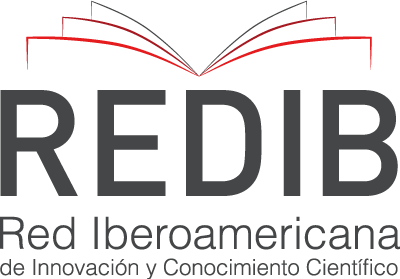Significant learning using the Nearpod tool as a technological didactic resource
DOI:
https://doi.org/10.56162/transdigital213Keywords:
Meaningful learning, Nearpod, technological didactic resource, ICTAbstract
At present, it is necessary for the teacher to acquire various aptitudes and technological skills, incorporate creative and innovative teaching strategies and resources into their teaching practice to promote meaningful learning. The aim of this research was to determine if the use of the Nearpod tool, as a didactic technological resource, has a significant favorable impact on the learning of undergraduate students. The t-test for independent samples was applied to compare the ratings of the subject evaluated between the control group and the experimental group. The data was collected through the questionnaire applied to a sample of 67 students of the Public Accountant Degree of the Administrative Economic Sciences Division of the University of Guanajuato, Mexico, during the period August - December 2020. The research corresponds to a quantitative approach with a correlational scope and a quasi-experimental and cross-sectional design. It is concluded that the use of the Nearpod tool contributed to the fact that the students of the experimental group had better academic performance than those of the control group. This means that the applied didactic resource achieved a statistically significant difference in the grades of the topic evaluated between both groups.
References
Bejarano, A. G., Angarita, J., & Mesa, C. V. (2013). Implicaciones pedagógicas del uso de las TICs en la educación superior. Revista de Tecnología, 12(3), 36-56. https://masd.unbosque.edu.co/index.php/RevTec/article/view/1750
Cabrol, M., & Severin, E. (2010). TICs en educación: una innovación disruptiva. BID Educación Aportes, 2(1), 1-8. http://idbdocs.iadb.org/wsdocs/getdocument.aspx?docnum=35130690
Cacheiro González, M. L. (2011). Recursos educativos TIC de información, colaboración y aprendizaje. Pixel-Bit. Revista de Medios y Educación, (39), 69–81. https://recyt.fecyt.es/index.php/pixel/article/view/61451
Cardini A., Bergamaschi, A., D’ Alessandre, V., Torre, E. & Olliver, A. (2020). Educar en Pandemia: entre aislamiento y distancia Social. Banco Interamericano de Desarrollo. https://publications.iadb.org/publications/spanish/document/Educar-en-pandemia-Entre-el-aislamiento-y-la-distancia-social.pdf
Casado, E. (2020). Aprendizaje activo y online mediante la herramienta interactiva Nearpod [Tesis de maestría, Universidad Pública de Navarra, España] Academica-e. https://academica-e.unavarra.es/handle/2454/37922
CEPAL. (2020). Las oportunidades de la digitalización en América Latina frente al Covid-19. Comisión Económica para América Latina y el Caribe. https://repositorio.cepal.org/handle/11362/45360
Díaz-Barriga, A. (2013). TIC en el trabajo del aula. Impacto en la planeación didáctica. Revista Iberoamericana de Educación Superior, 4(10), 3-21. https://doi.org/10.1016/S2007-2872(13)71921-8
Expósito, C. D., & Marsollier, R. G. (2020). Virtualidad y educación en tiempos de COVID-19. Un estudio empírico en Argentina. Educación y Humanismo, 22(39), 1-22. https://doi.org/10.17081/eduhum.22.39.4214
García-Barrera, A. (2016). Evaluación de recursos tecnológicos didácticos mediante e-rúbricas. Revista de Educación a Distancia (RED), 49(13), 1-13. https://revistas.um.es/red/article/view/257691
George, C. E., Molina, I. A., & Uribe, A. P. (2022). La competencia digital docente que define al profesor humanista del siglo XXI. Transdigital, 3(6), 1-31. https://doi.org/10.56162/transdigital136
Gómez, S., & González, L. (2018). Aprendizaje interactivo utilizando la herramienta Nearpod. Memoria final del Proyecto de Innovación y Mejora Docente, Universidad de Salamanca. https://gredos.usal.es/bitstream/handle/10366/138310/MID_17_214.pdf?sequence=1
González-Pérez, M. A., & Mercado Percia, H. (2014). Gerenciando la Generación Y o el reto Millennials. AD-Minister, (24), 7–8. https://publicaciones.eafit.edu.co/index.php/administer/article/view/2431
Hernández Adell, I. (2018). Inmersión digital en el aula: el software educativo Nearpod. Investigaciones en historia económica: su transferencia a la docencia, 556-570. https://www.aehe.es/wp-content/uploads/2018/11/HERNANDEZ.pdf
Hernández-Sampieri, R., & Mendoza, C. P. (2018). Metodología de la investigación. Las rutas cuantitativa, cualitativa y mixta. McGraw-Hill Education.
Hsu, Y. C., Ho, H. N. J., Tsai, C. C., Hwang, G. J., Chu, H. C., Wang, C. Y., & Chen, N. S. (2012). Research trends in technology-based learning from 2000 to 2009: A content analysis of publications in selected journals. Journal of Educational Technology & Society, 15(2), 354-370. https://www.jstor.org/stable/jeductechsoci.15.2.354
Mercado-López, E. P. (2022). Conocimiento y uso de las tecnologías de información y comunicación en docentes de Educación Secundaria. Transdigital, 3(6). 1–22. https://doi.org/10.56162/transdigital149
Nearpod. (2023, 1 de septiembre). Nearpod. https://nearpod.com/library/
Pérez, J. E. (2017). Nearpod. Journal of the Medical Library Association, 105(1), 108–111. https://doi.org/10.5195/jmla.2017.121
Quezada, N. (2017). Estadística con SPSS 24. Editorial Macro.
Sierra, C. A. (2013). La educación virtual como favorecedora del aprendizaje autónomo. Panorama, 5(9), 75–87. https://doi.org/10.15765/pnrm.v5i9.37
UNESCO. (2019). Marco de competencias de los docentes en materia de TIC UNESCO. https://unesdoc.unesco.org/ark:/48223/pf0000371024
UNESCO. (2020, 06 de agosto). El Secretario General de las Naciones Unidas advierte de que se avecina una catástrofe en la educación y cita la previsión de la UNESCO de que 24 millones de alumnos podrían abandonar los estudios. https://es.unesco.org/news/secretario-general-naciones-unidas-advierte-que-se-avecina-catastrofe-educacion-y-cita
Velázquez, F. J. (2017). Innova-Acción en el aula: Modelo de innovación docente basado en la acción y las tecnologías móviles para la generación millennials. Grañén Porrúa.
Walpole, R. E., Myers, R. H., Myers, S. L., & Ye, K. (2012). Probabilidad y estadística para ingeniería y ciencias. Pearson Educación.
Zambrano, D. L., & Zambrano, M. S. (2019). Las Tecnologías de la Información y las Comunicaciones (TICs) en la educación superior: consideraciones teóricas. Revista Electrónica Formación y Calidad Educativa, 7(1), 213–228. https://observatorioturisticobahia.uleam.edu.ec/index.php/refcale/article/view/2750

Downloads
Autor de correspondencia
El autor de correspodencia se identifica con el siguiente símbolo: *Published
How to Cite
License
Copyright (c) 2023 Artemio Jiménez Rico, Francisco Javier Velázquez Sagahón

This work is licensed under a Creative Commons Attribution 4.0 International License.
All articles in Transdigital are licensed under a Creative Commons Attribution 4.0 International License. Authors hold the copyright and retain publishing rights without restrictions.




























